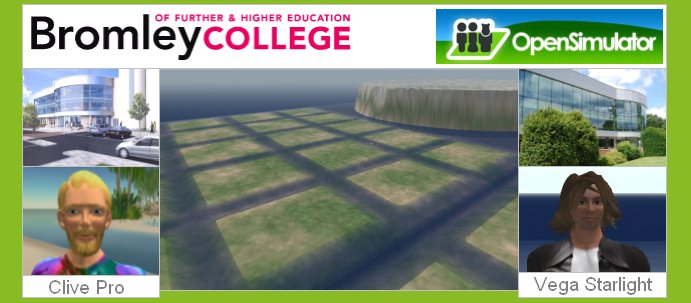Following
my presentation at the College HE day on the use of virtual worlds I have
subsequently received two project requests, the first was from our Bio Med team
who asked would it be possible to have virtual lab that students could use to
become familiar with equipment and use. So first things first I went about
setting up a sky platform and installed a build; I actually found this one at
OpenSimCity, and after making a few texture changes fig 1.
 |
| Fig 1 |
I met with a couple of
team members, where I am pleased to say they agreed and we talked about some
details of use and functionality.
The second request came from Functional
Skills math’s, and just like with Bio Med, my approach basically was, can we
get the virtual world to do something for us that the vle does not, and of
course my answer to that is provide a simulated life experience, it really is
important I think not to simply reproduce vle or documented content and drop it
into a virtual world. And so my plan is to present students and staff with an
urban set of life experiences, and as a starting point using a café facility
where students can order beverages and food, work out their payment and change,
then sit down chat and enjoy the virtual ambience see fig 2.
 |
| Fig 2 |
This is the basic
setup, and I have used an existing urban style sim that we already have running for this. I will be getting my head down for some serious building and scripting
in the days ahead on both projects, So if you are interested then please stay
in touch and as always feel free to comment.










